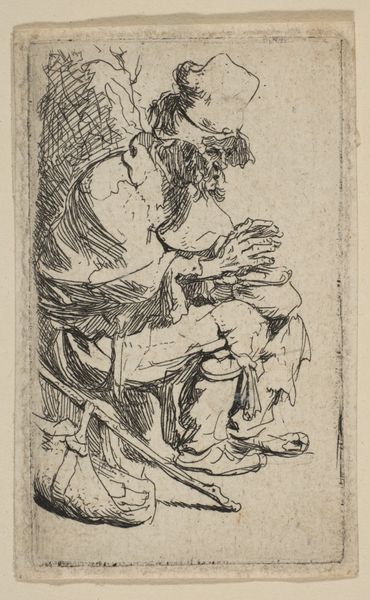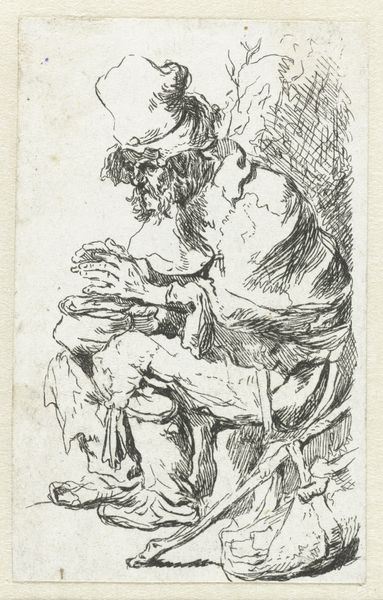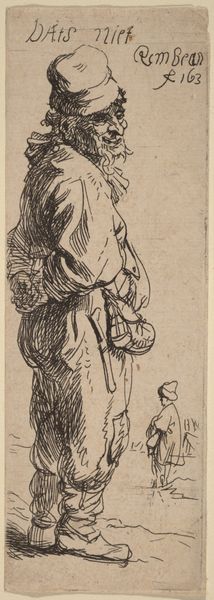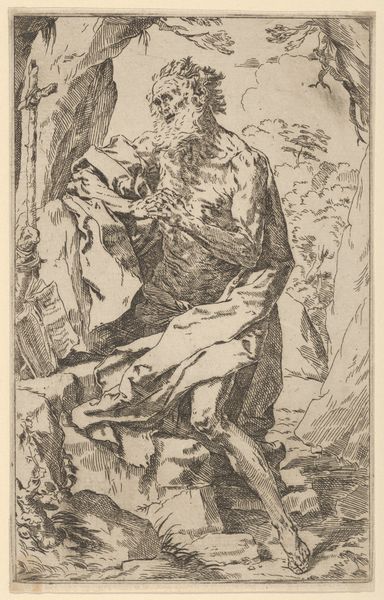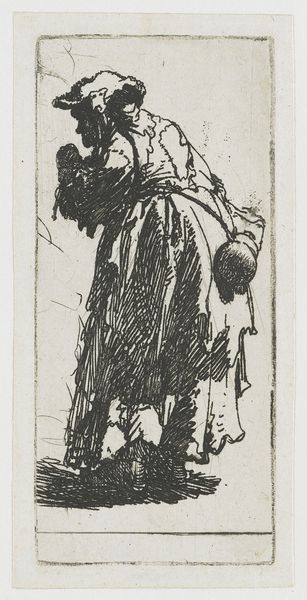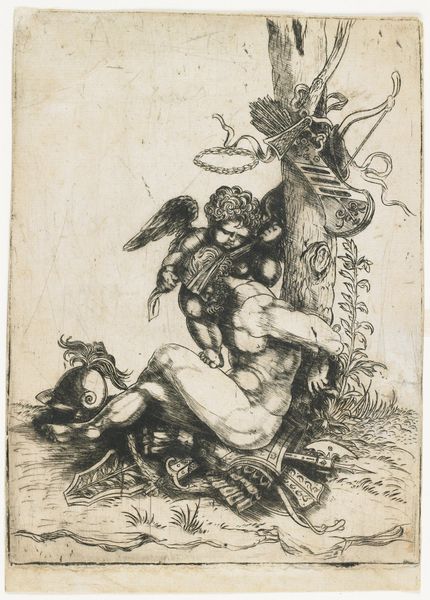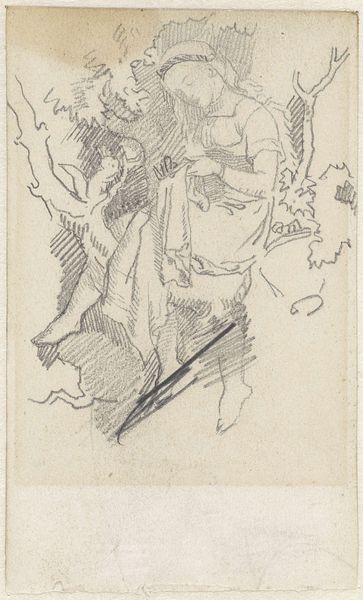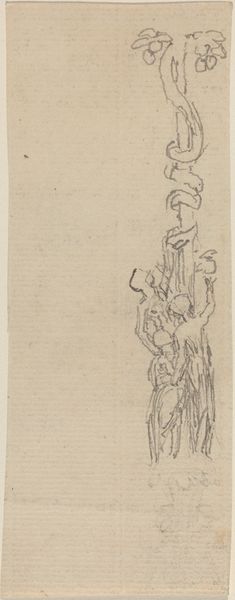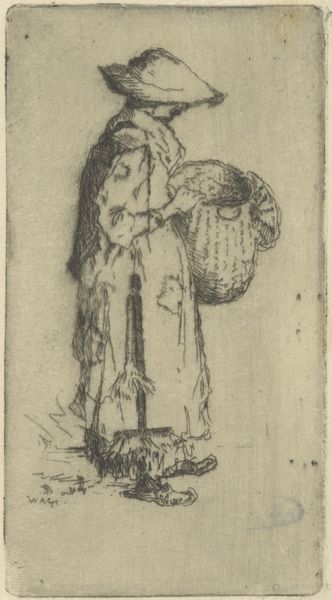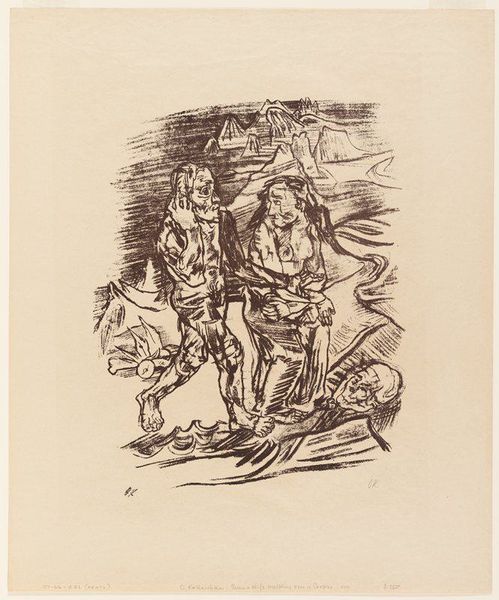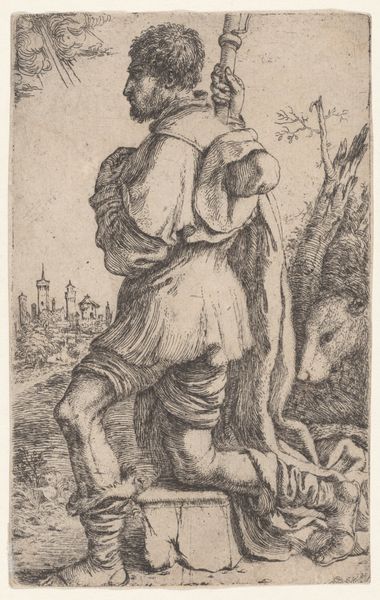
drawing, ink, pen
#
portrait
#
drawing
#
narrative-art
#
baroque
#
pen illustration
#
pen sketch
#
cartoon sketch
#
figuration
#
personal sketchbook
#
ink
#
ink drawing experimentation
#
pen-ink sketch
#
pen work
#
sketchbook drawing
#
pen
#
genre-painting
#
storyboard and sketchbook work
#
sketchbook art
Dimensions: height 79 mm, width 53 mm
Copyright: Rijks Museum: Open Domain
Curator: Here we have an ink drawing entitled "Beggar seated warming his hands at a chafing dish," created anonymously sometime between 1719 and 1780. It is currently held in the collection of the Rijksmuseum. Editor: Immediately, I notice the powerful use of line, dense and frantic in some areas, lighter and more suggestive in others. It evokes a palpable sense of cold and vulnerability. Curator: Indeed. The artist has skillfully manipulated line weight and hatching to model form and suggest texture, giving a sense of the beggar's ragged clothing and weathered features. Editor: I can’t help but see this figure within a larger social framework. Who were the poor during this era, and how were they viewed? Was this drawing intended as a sympathetic portrayal or something else? The sketch is made by an anonymous hand, whose social sphere and gaze can’t be known for sure. Curator: One could argue that the emphasis on anatomical detail serves to depersonalize the subject, reducing him to a mere study of form. Observe, for example, the exaggeration of the hands. Editor: That hyper-focus on the hands and the worn clothes feels so intimate, though, to me, not depersonalizing. The slumped posture and inward gaze contribute to a sense of isolation. This resonates powerfully, I think, as we consider the continuing struggles faced by those living on the margins. There’s a quiet power in this drawing—almost defiance of our contemporary assumptions of “art.” It encourages us to engage with uncomfortable truths. Curator: Ultimately, this piece stands as a testament to the artist’s skill in manipulating the formal elements of line and tone to create a compelling visual narrative, whether socially conscious or otherwise. Editor: Agreed. By reflecting on the piece’s emotional impact in the 18th century, we might reconsider the ethical responsibilities of representation today. Thank you!
Comments
No comments
Be the first to comment and join the conversation on the ultimate creative platform.
